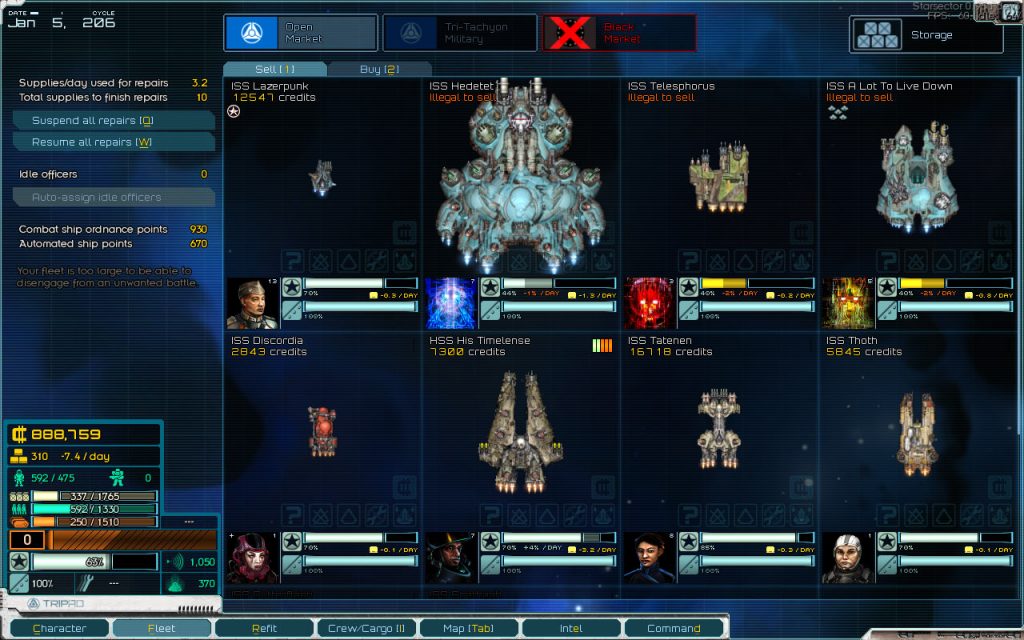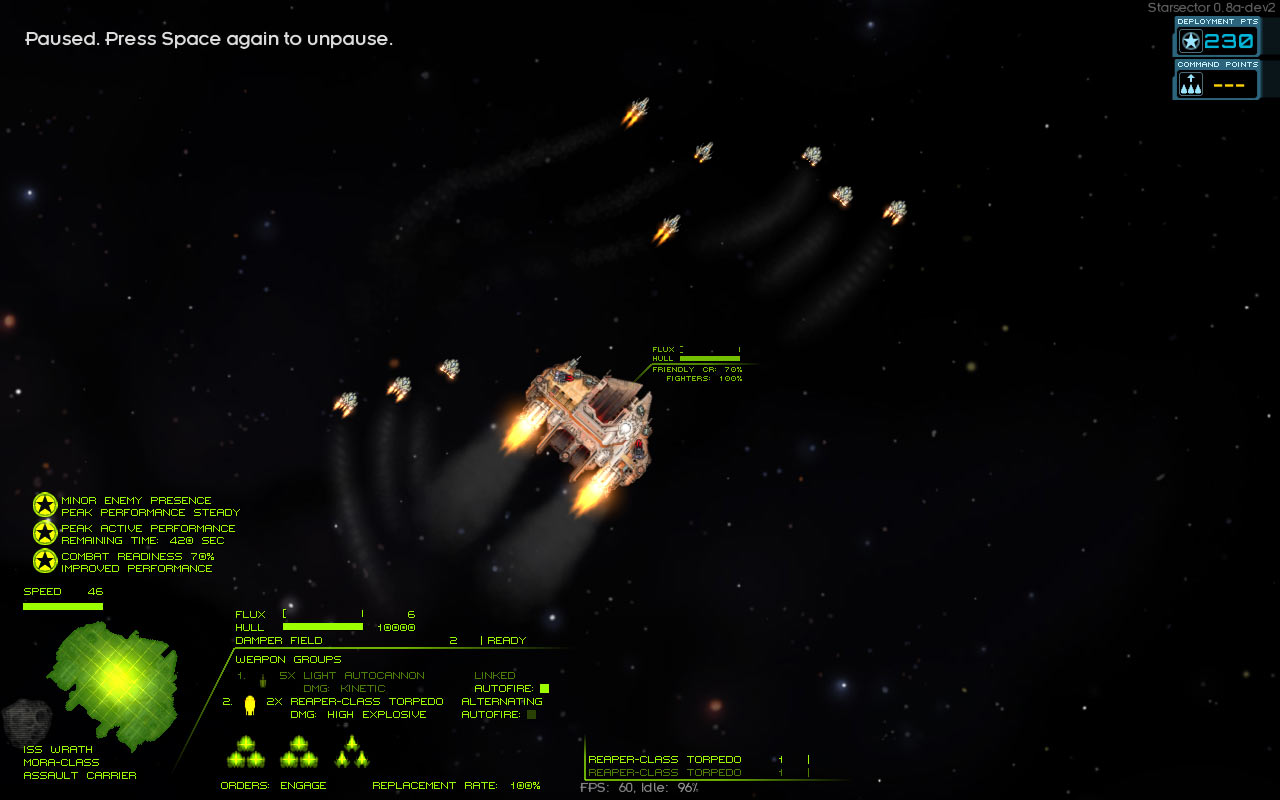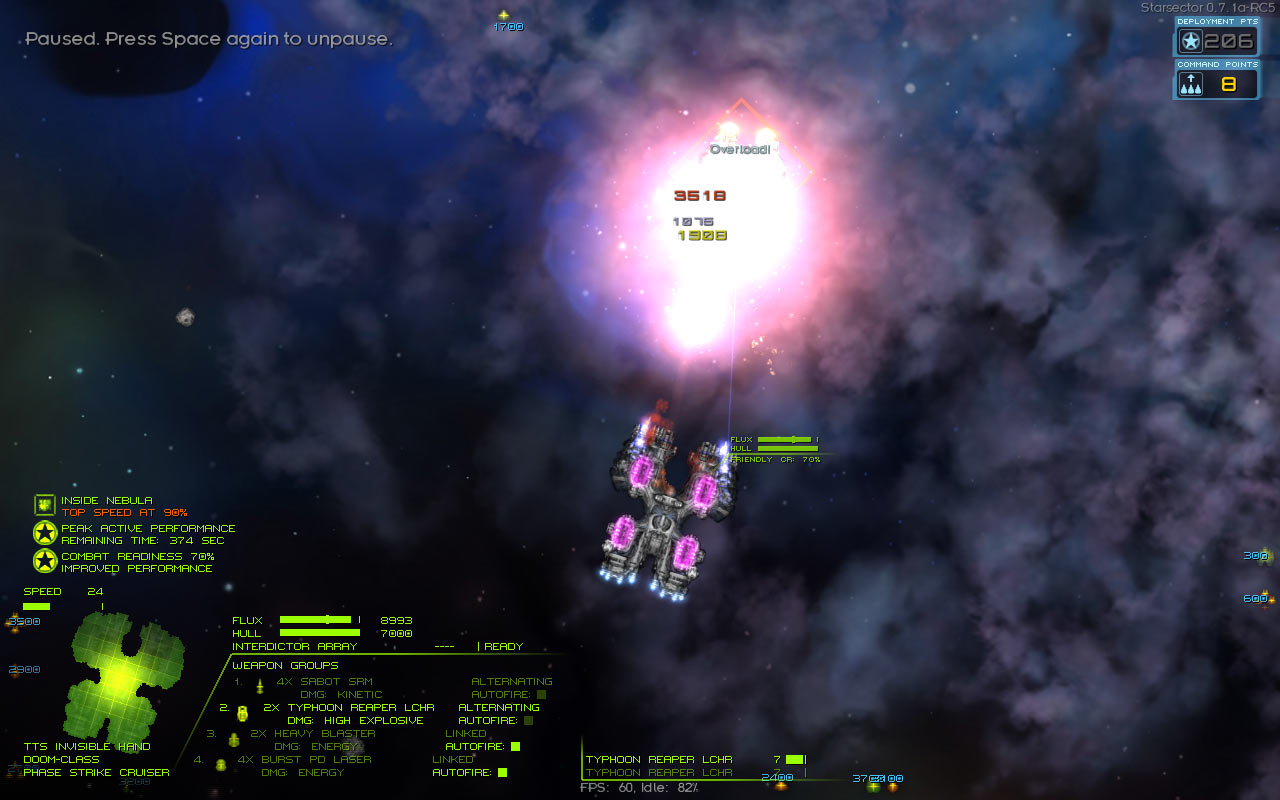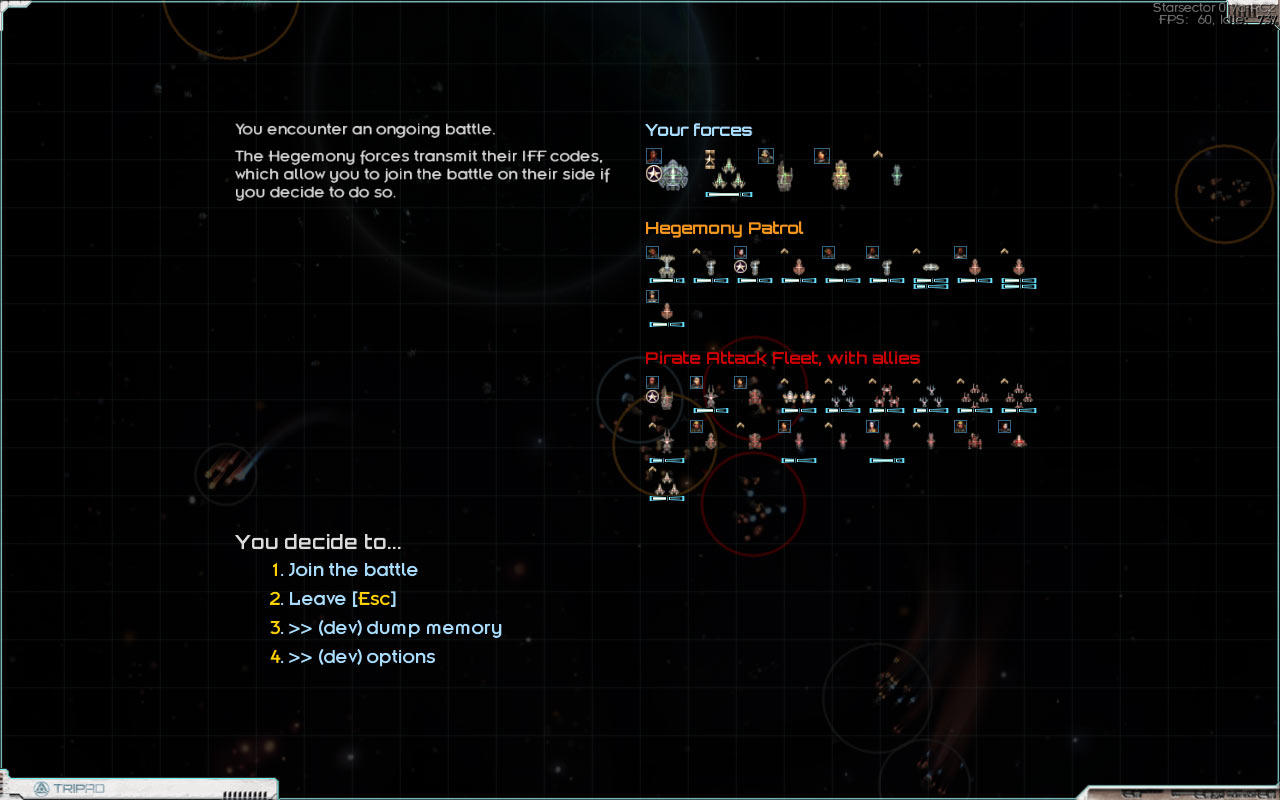The next update will add strong narrative RPG elements to Starsector, among other things.
I feel no small amount of trepidation because this is both a change and it is a particular story about particular characters in a way the pure sandbox certainly isn’t. This necessarily constrains your – the player’s – experience of the game-fantasy and the meta-game fantasy of an “unfinished game” which has the potential to become everyone’s dreams in a free-floating quantum state… until you see it for real and it turns out it isn’t quite what you dreamed.

I suppose this seems like an awfully negative way to start off; this is what I mean about trepidation. And I am legitimately excited about sharing more of the world of Starsector, letting players dive in a bit closer and get a feel for what it’s like for people that live in this world. Find out what they think, find out a bit more about why movers and shakers move like they do. If I may say so, I think we’ve done some pretty good work!
The written wordcount has already exceeded the minimum definition for a novel (50k) a few times over by now. I’ve attempted Nanowrimo a few times in the past and always choked almost instantly. My experience writing Starsector has been a stark contrast – the words just flow! It seems so obvious, most of the time, what comes next, what feels right to be said. I suspect part of it is the constraint of the medium focusing creativity, but it may also perhaps be the very clear connection to an audience (that’s y’all out there!). A novel feels a bit like a bunch of words floating out in (ha) space. A game, however, has a player. They must actively engage and progress. I know a player is committed in a way a reader isn’t. (Which probably isn’t at all true; people read books, after all. I’ve even read one or two in my day.)
Whatever it is, maybe I can’t rationalize it. But something works here for me in a way that hasn’t elsewhere. I’ll take it.
Let’s get to the nuts and bolts of this.
We’ve had to deal with certain constraints and design problems while adding written content to Starsector. Some of these are faced by all games which use writing, some are particular to the context of Starsector. I am not going to talk about any specific narrative beats or plot details, but I will talk about how the narrative is structured, so from a certain point of view one could derive meta-spoilers from this blog post. I think the most pure and magical way to experience Starsector would be with no foreknowledge of any of this, so I’ll give you fair warning now: if you don’t want to know anything, stop reading.

Read the rest of this entry »
I’ve wanted to update the skill system for a while, but that’s part of the challenge with early-access style development – if you update something too early, you might have to update it again, when yet more things change and make that part not-quite-fit once more. With how many parts of the game the skill systems has tendrils into, it wasn’t something I wanted to do more than once.
Now, finally, the game is in a place where I can do that – I’ve got a good overview of what I actually want from the skill system, the number of unknowns is low, and most of the unknowns are probably known.

(Please note – some of the graphics and text in the screenshots to follow are placeholders.)
So, what are the goals of the skill overhaul? First and foremost, the skill system should increase the replay value of the game – that is, depending on what skills are picked, the player should be able to explore new ways to play the game.
Read the rest of this entry »
Let’s begin by taking a look at how fighters started out, to see how they got to the point of needing a redesign.
The first playable release of the game only had combat missions, and the way fighters worked was heavily influenced by that. My understanding of how the campaign would work was at that point quite fuzzy, and so once the campaign did come about, fighters had to be adjusted to fit in. This led to some awkward mechanical interactions and obscure rules.

For example, if you have any ships with flight decks in your fleet, then you can’t lose fighters permanently. However, you can still have fighters in your fleet if you don’t have any carriers, they just don’t get any replacements in combat, and if you lose all of them, you permanently lose the wing. And if you do have carriers deployed, and lose all the fighters in a wing in combat, they may get replacements or be lost for the duration of the battle, depending on whether any flight decks were available at the exact moment the last fighter was destroyed.
Very much a “good enough for now” state of affairs, and something that’s been gnawing at me for a while. It’s too much of a mess to continue ignoring indefinitely, but why clean it up now, seemingly when there’s exploration, salvage, and everything related to work on?
The answer is, of course, that fighters tie into those things. Can you recover fighters through salvage? Can automated defenders use fighters? What about the eventual/upcoming skill revamp? That certainly needs to include fighters. Despite being a relatively small part of combat, fighters are still a part of that foundation, and it’ll help moving forward to finally have it be solid.
Read the rest of this entry »
As usual, after a major release there’s some time to polish up some things that there just hasn’t been time for up to that point. In fact, a lot of the upcoming 0.7.2a is turning out to be about “paying off” technical and design debt – things that are “good enough for now”, but do have to be addressed at some point.

One such is phase cloaking. There’s a post from a while back on how the current mechanics came to be if you’re interested in the details, but let’s summarize:
Way, way back, the original idea for phase ships was something submarine-like, being able to hide on the battlefield and deliver surprise attacks. That sounds like fun but didn’t turn out to be practical, so phase cloaking changed to become a way to avoid damage instead – shift to another dimension, let enemy fire pass through/over your ship, uncloak, and fire back. That essential concept remains unchanged in this new iteration; the changes are looking to address some specific issues with the implementation.
What, then, are the issues? Read the rest of this entry »
First, a brief summary of what this post is about – a new campaign feature that allows nearby fleets – naturally, including yours – to join ongoing battles.
If you’ve been following the development of this release, you’re probably aware that things are in the “polish things and make it fun to play” phase more so than in the “add more features” phase. Why, then, add a significant new feature at this stage? The answer is that it’s a direct response to playtesting, rather than a specifically planned-for feature on the roadmap – it’s meant to help address several important gameplay issues, some quite long-standing. Now was a good opportunity to do it, and here we are. Looking back, I’m glad I ended up taking this on now rather than later – with how many different pieces of the code this change touches, it would only get more difficult with time.

Let’s take a brief look at what the design goals are, and then we’ll dive into the specifics of how it works. Read the rest of this entry »




























